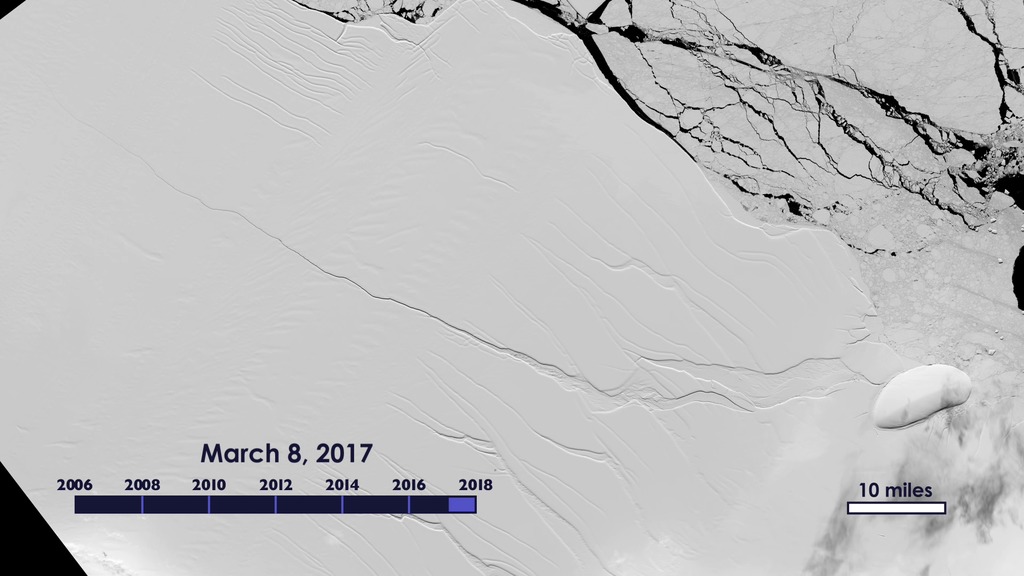Antarctica's Giant Iceberg

An iceberg the size of Delaware recently broke off from Antarctica.
An iceberg about the size of the state of Delaware split off from Antarctica’s Larsen C ice shelf sometime between July 10 and July 12. Larsen C, a floating platform of glacial ice on the east side of the Antarctic Peninsula, is the fourth largest ice shelf ringing Earth’s southernmost continent. In 2014, a crack that had been slowly growing into the ice shelf for decades suddenly started to spread northwards. Now that the close to 2,240 square-mile (5,800 square kilometers) chunk of ice has broken away, the Larsen C shelf area has shrunk by approximately 12 percent. The calving of the massive new iceberg was captured by the Moderate Resolution Imaging Spectroradiometer on NASA’s Aqua satellite, and confirmed by the Visible Infrared Imaging Radiometer Suite instrument on the joint NASA/NOAA Suomi National Polar-orbiting Partnership (Suomi-NPP) satellite. Thermal satellite images that detect temperature differences between the frozen ice and warmer sea water allowed scientists to see the crack in the Antarctic winter darkness. Watch the videos to learn more.
Watch the crack in the Larsen C ice shelf grow from 2006 to 2017.
Explore how NASA uses aircraft to study the Antarctic ice sheet.

A thermal image taken July 12 shows the rift between iceberg and ice shelf as a thin line of slightly warmer area, shown in lighter colors.

NASA's Operation IceBridge overflew the rift in Larsen C on Nov. 10, 2016.

As of Nov., 2016, the rift in Larsen C was about 300 feet wide and about a third of a mile deep.
For More Information
See NASA.gov
Credits
Please give credit for this item to:
NASA's Scientific Visualization Studio
IceBridge photos courtesy of NASA/John Sonntag
Thermal wavelength image courtesy of NASA Worldview
-
Writer
- Maria-Jose Vinas Garcia (Telophase)
-
Scientists
- Christopher Shuman (UMBC JCET)
- Kelly Brunt (Earth System Science Interdisciplinary Center/University of Maryland)
-
Producers
- Jefferson Beck (USRA)
- Matthew R. Radcliff (USRA)
Release date
This page was originally published on Monday, July 24, 2017.
This page was last updated on Wednesday, May 3, 2023 at 1:47 PM EDT.

